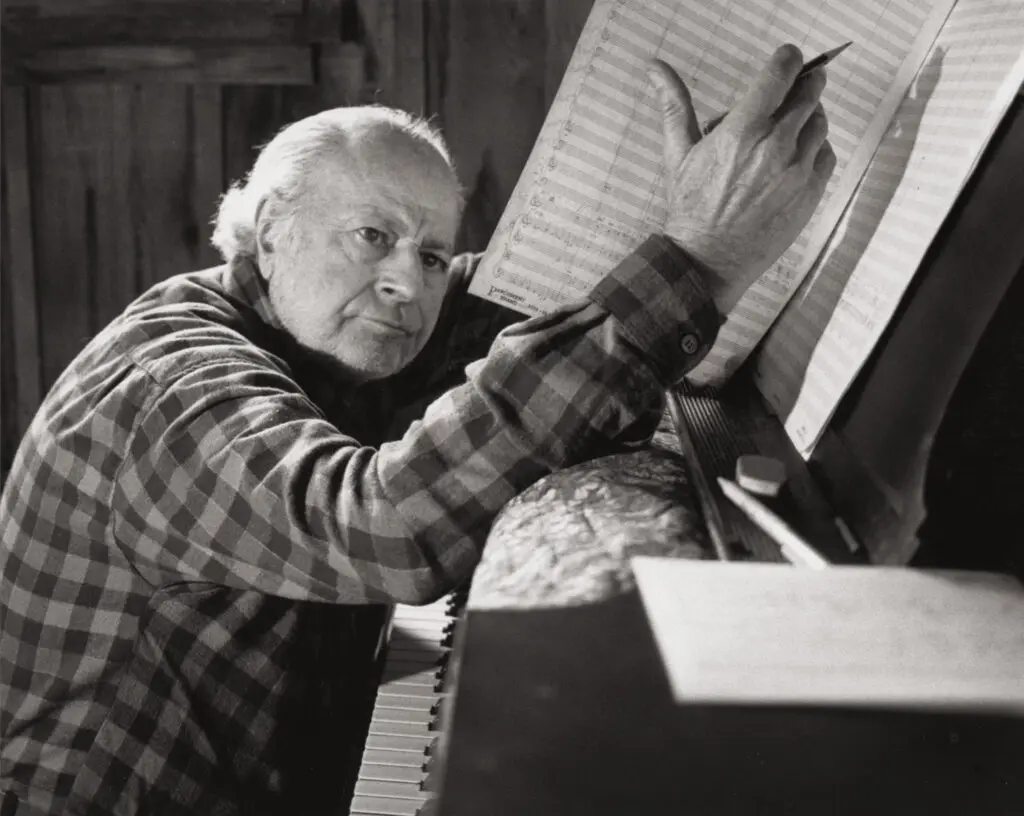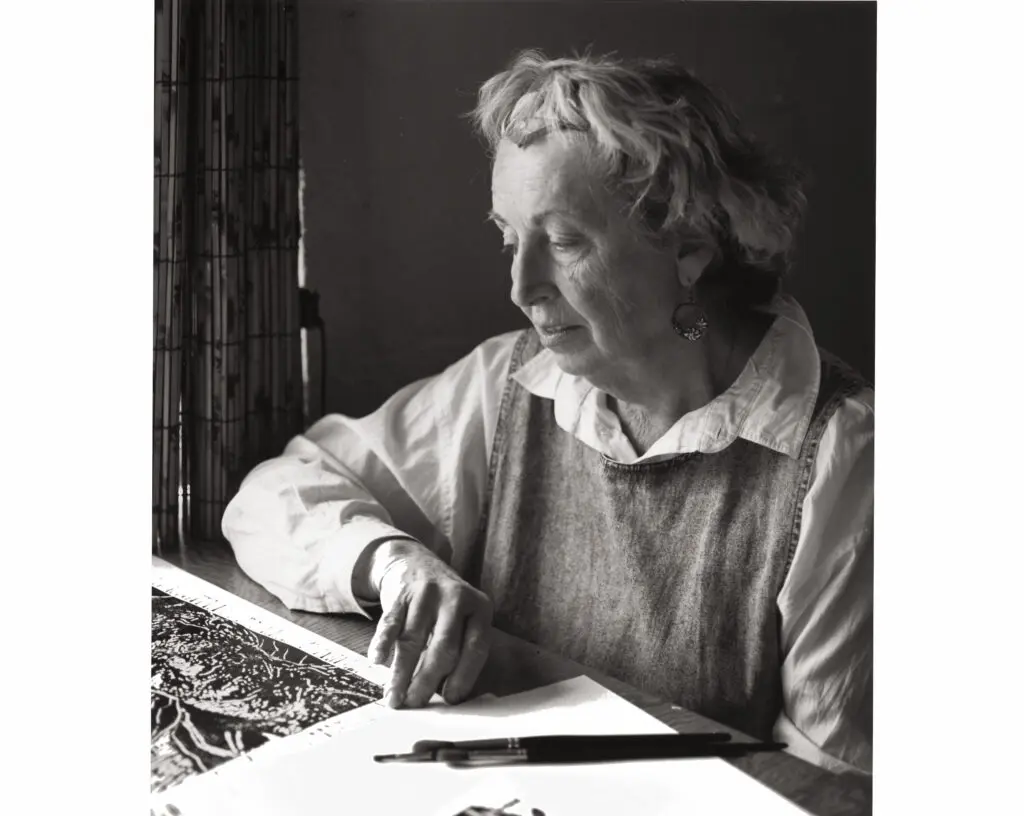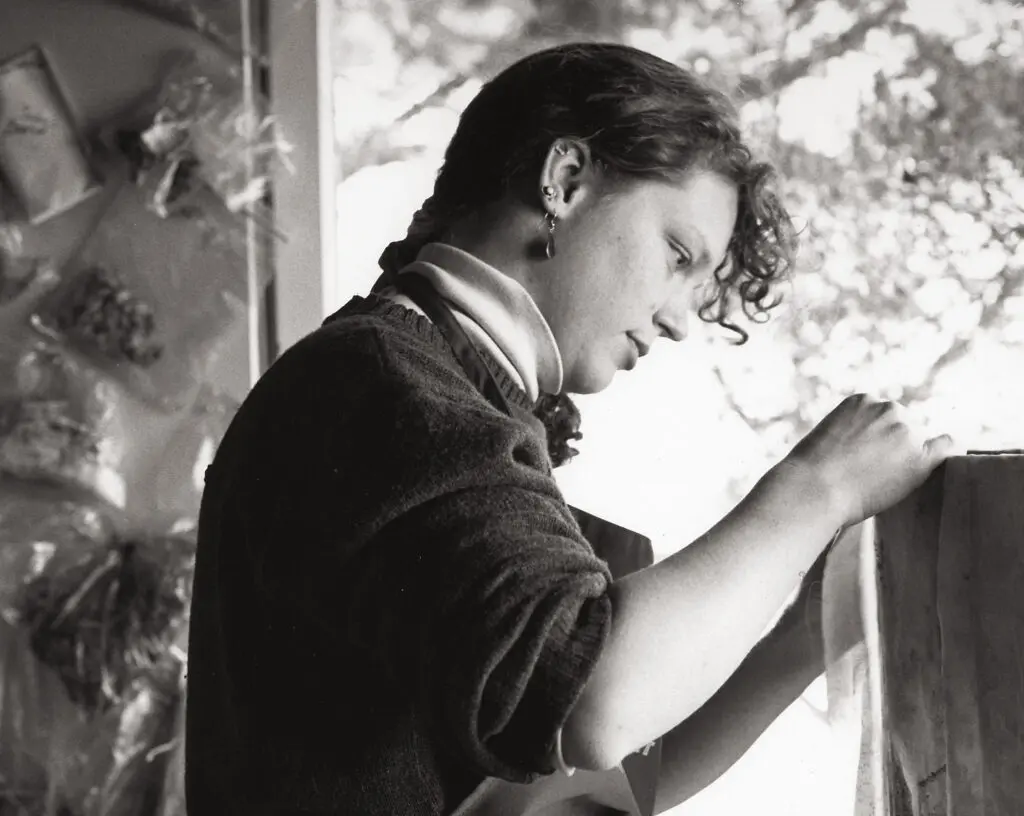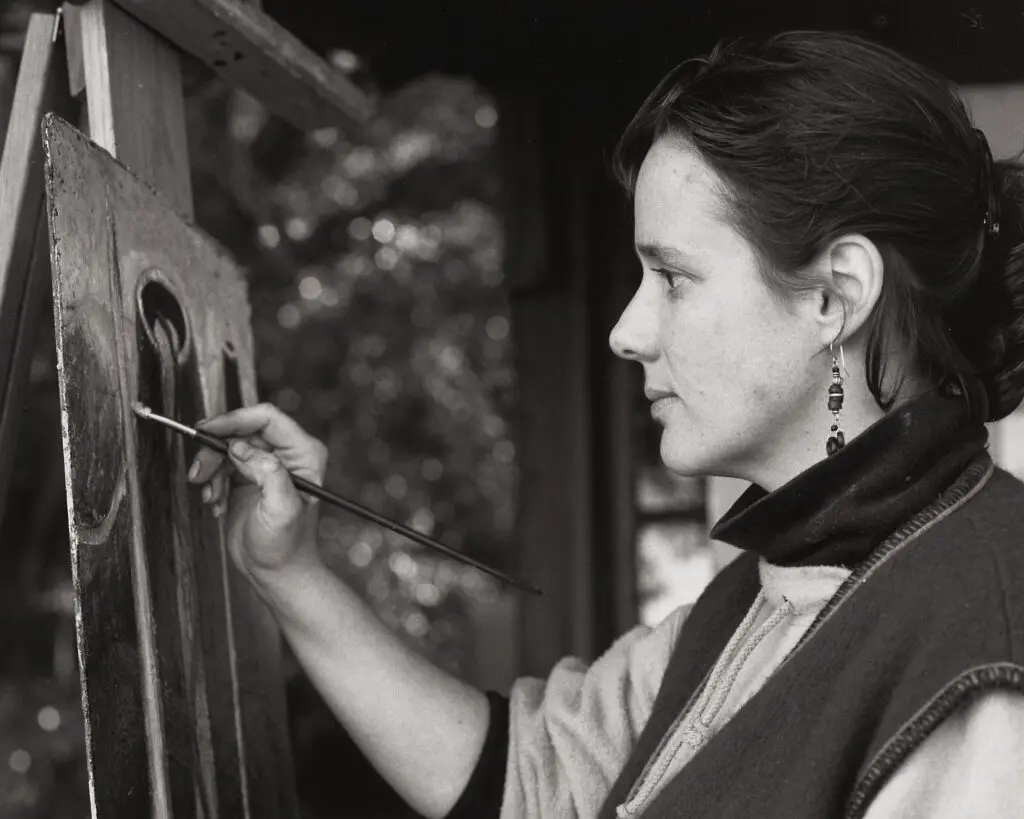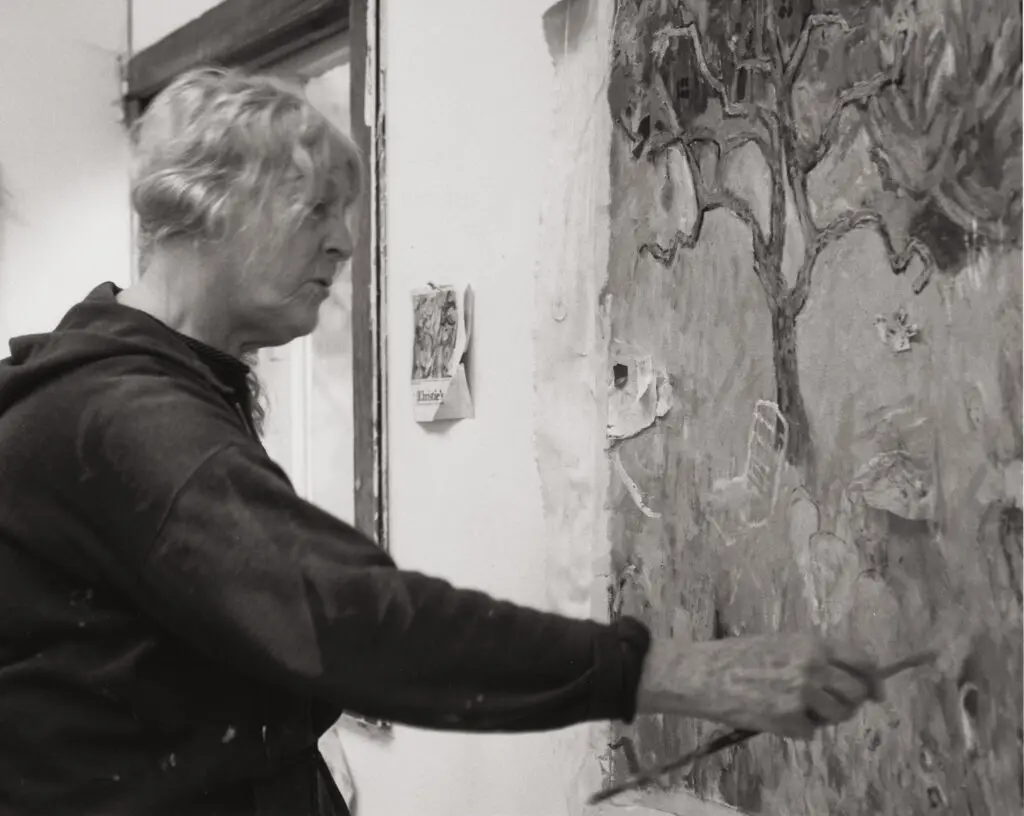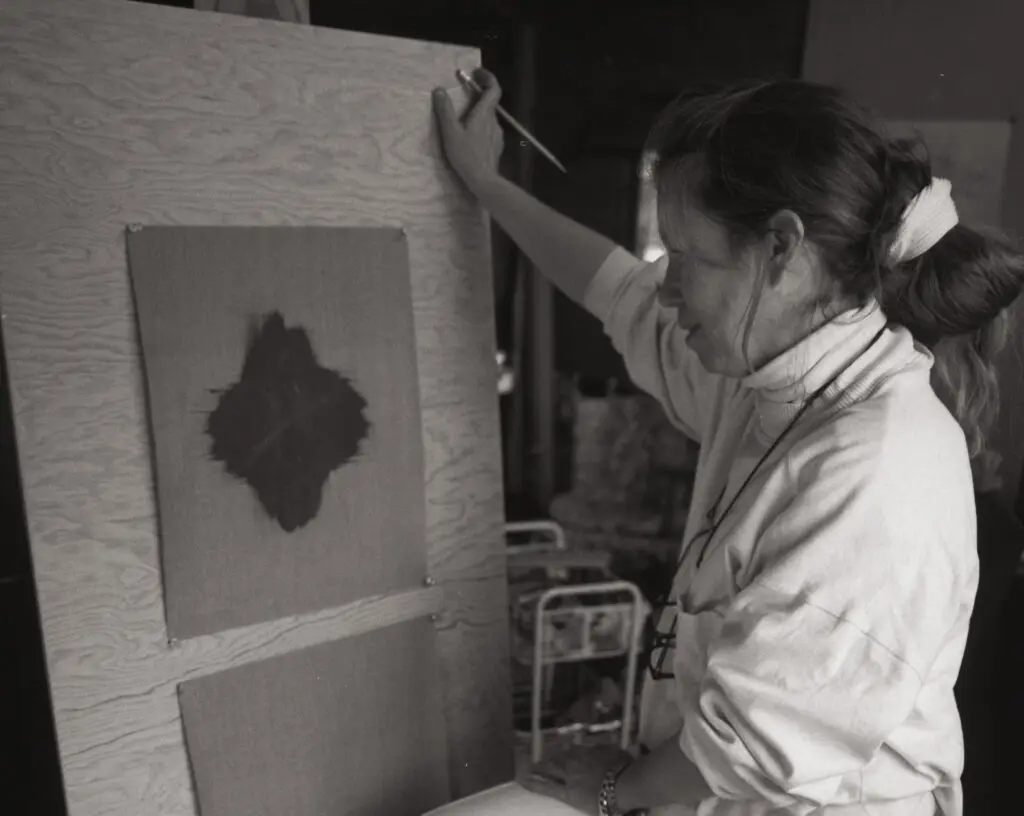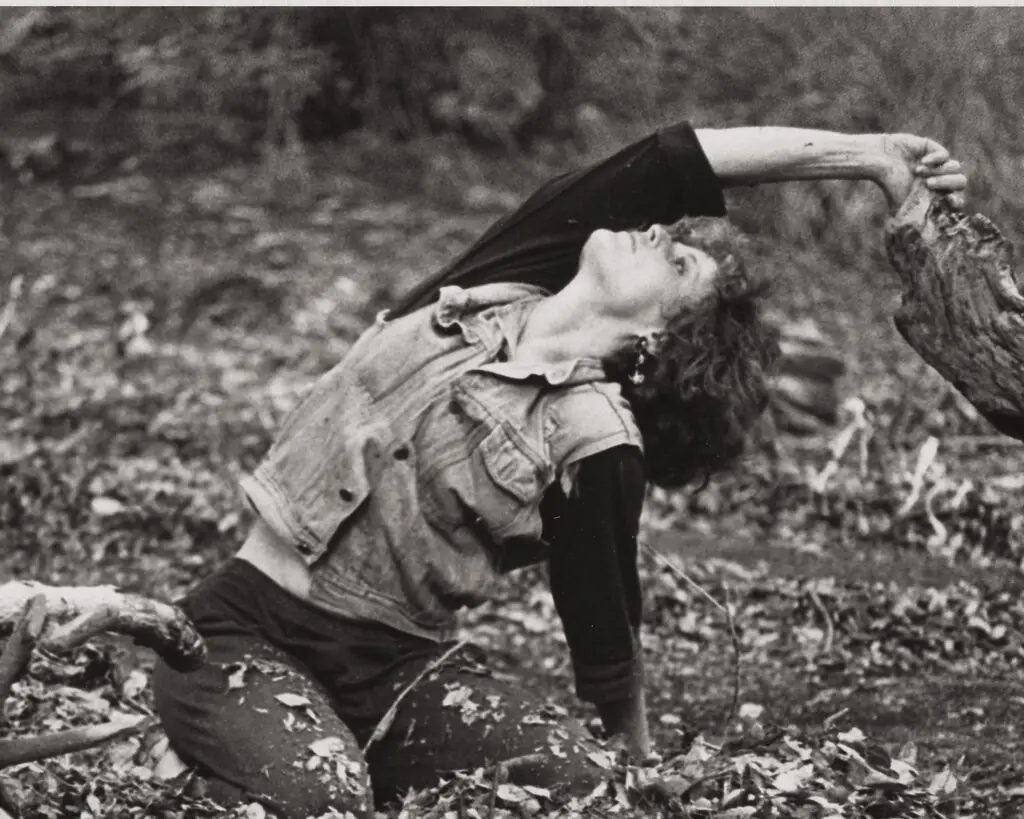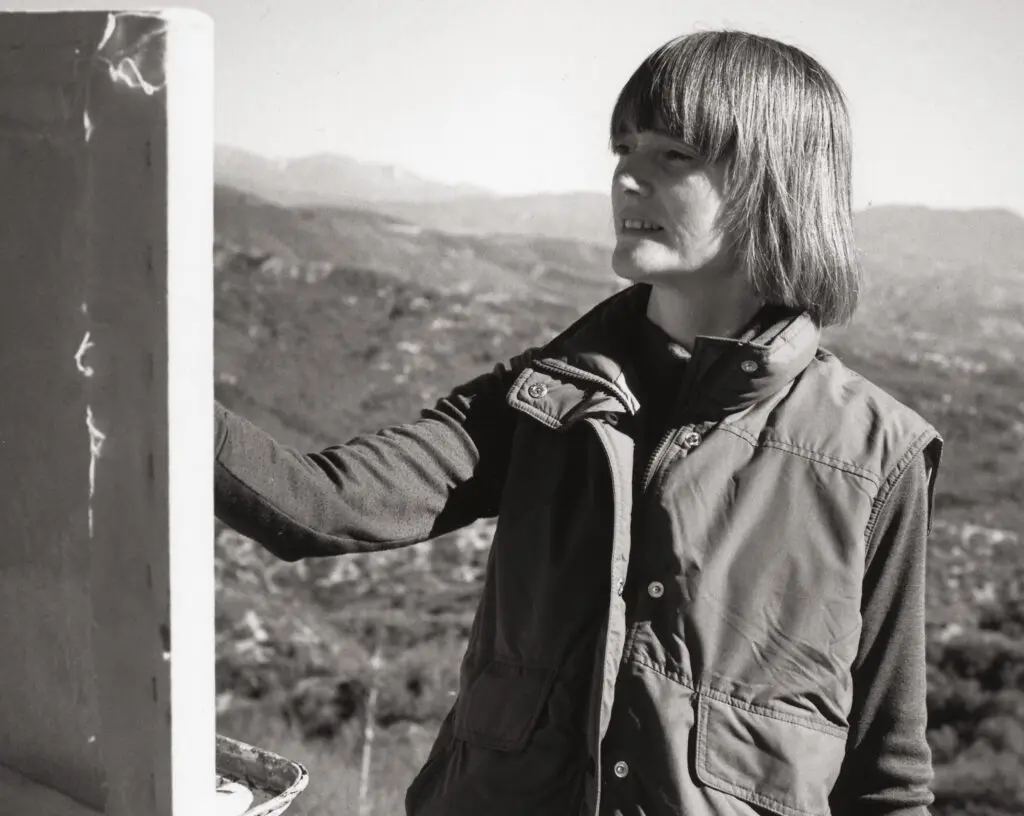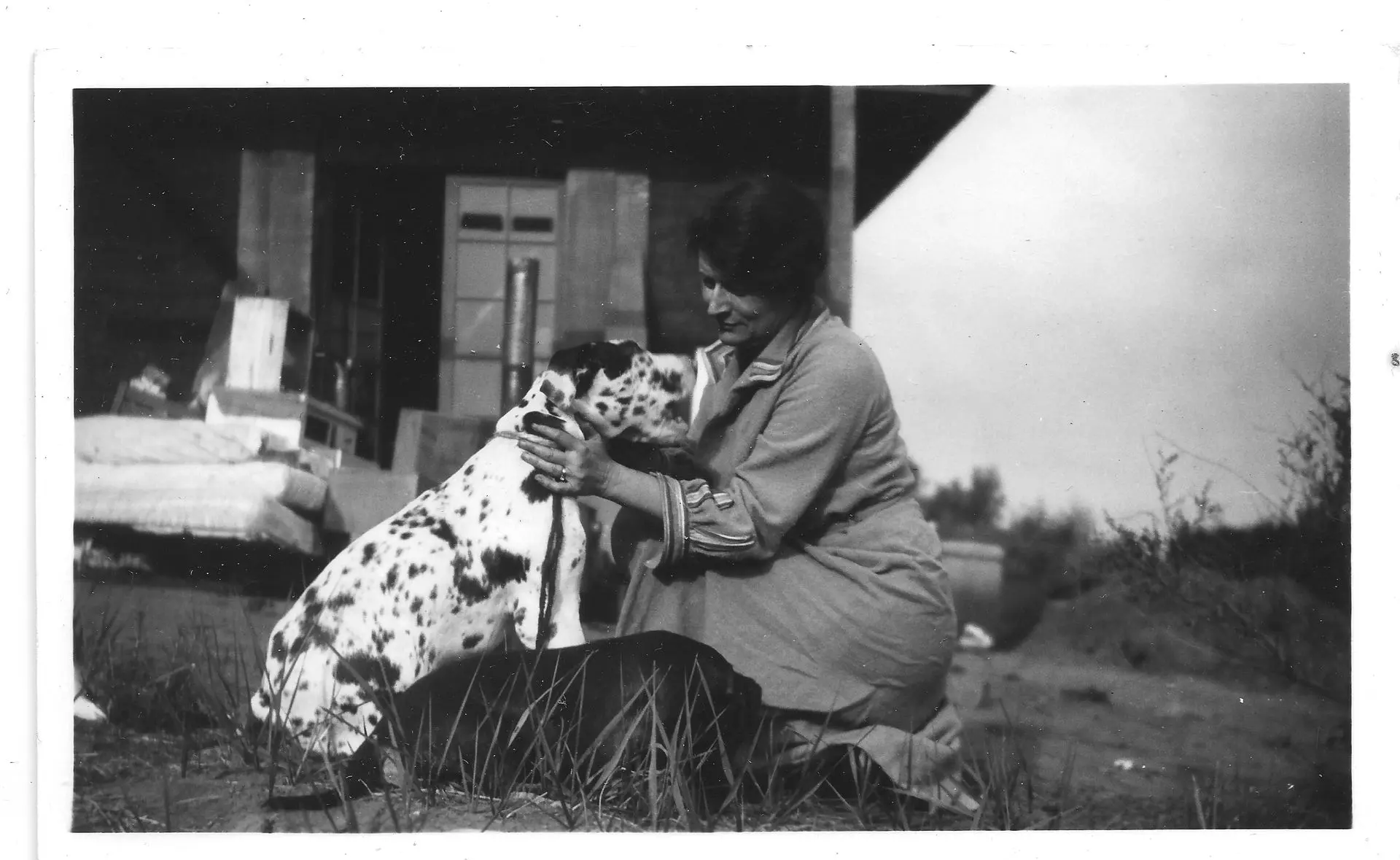Art is a harmony parallel with nature.
-Paul Cezanne
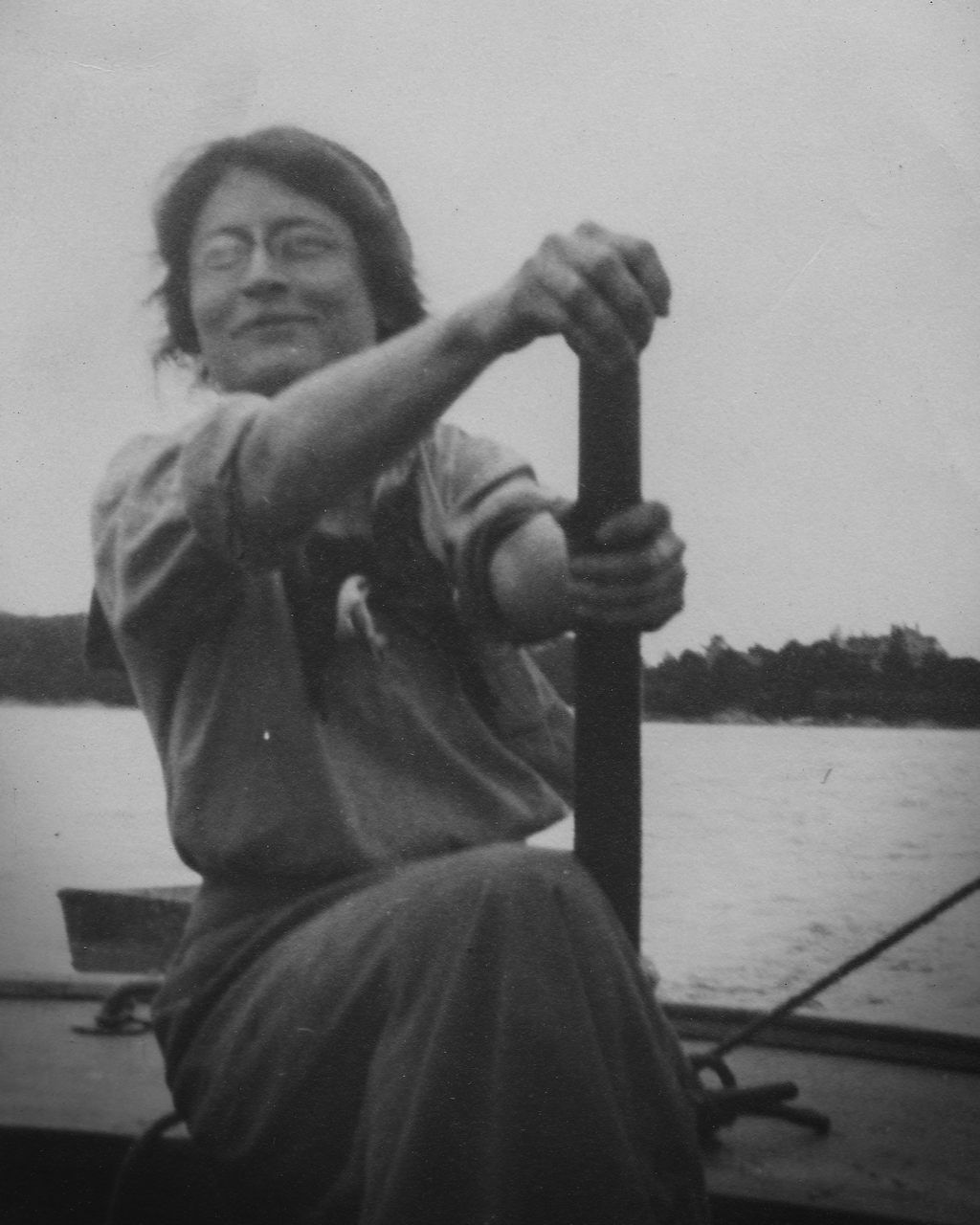
Ellen Babcock Dorland
1888-1986
CO-FOUNDER
For fifty of her 98 years, from 1933 to 1983, Ellen Bronson Babcock Dorland’s life centered on Rancho Ticañu, the future Dorland Mountain Arts, and its life centered around her—her students, her international circle of friends and admiring colleagues in music and other fields, all flocked to this rustic hideaway, far from the madding crowd. They came for the stunning beauty of her mind and of the surroundings; for the deep explorations of music, literature, other intellectual pursuits, and nature. But also her wit (in the early years of Dorland Mountain Arts, she occasionally enjoyed referring to the resident artists as “inmates”), brusque charm, and galvanizing energy. Calling her a piano teacher is like calling Michelangelo a painter. Equally at home in the glittering capitals of Europe or roughing it in the wild, Ellen made her debut as a concert pianist at age 17 with the Berlin Philharmonic, Artur Nikisch conducting, in 1905.
Barbara Horton
1917-2003
CO-FOUNDER
First, Barbara Curtis Horton saved the landscape from development, by making it possible for Ellen and Robert Dorland to transfer Rancho Ticañu to The Nature Conservancy as a nature preserve. Then, by mobilizing and leading a small army of volunteers and donors, she realized Ellen’s dream of continuing its contribution to creative life after her time, as Dorland Mountain Arts. Like Ellen, Barbara was a teacher (ballet) of such depth, breadth, and passion, that she changed her students' lives far beyond the subject at hand. Her love of nature and all things great and small led her to a second career as a pioneering environmental activist in the 1960’s. A Phi Beta Kappa graduate in History at Stanford (’39), she shared Ellen’s rich and varied life of the mind. A published author (“Tiger Bridge”), she was also a newspaper columnist (“Of Living Things”). And she knew how to throw a great party, which sometimes were themed with sets she designed.
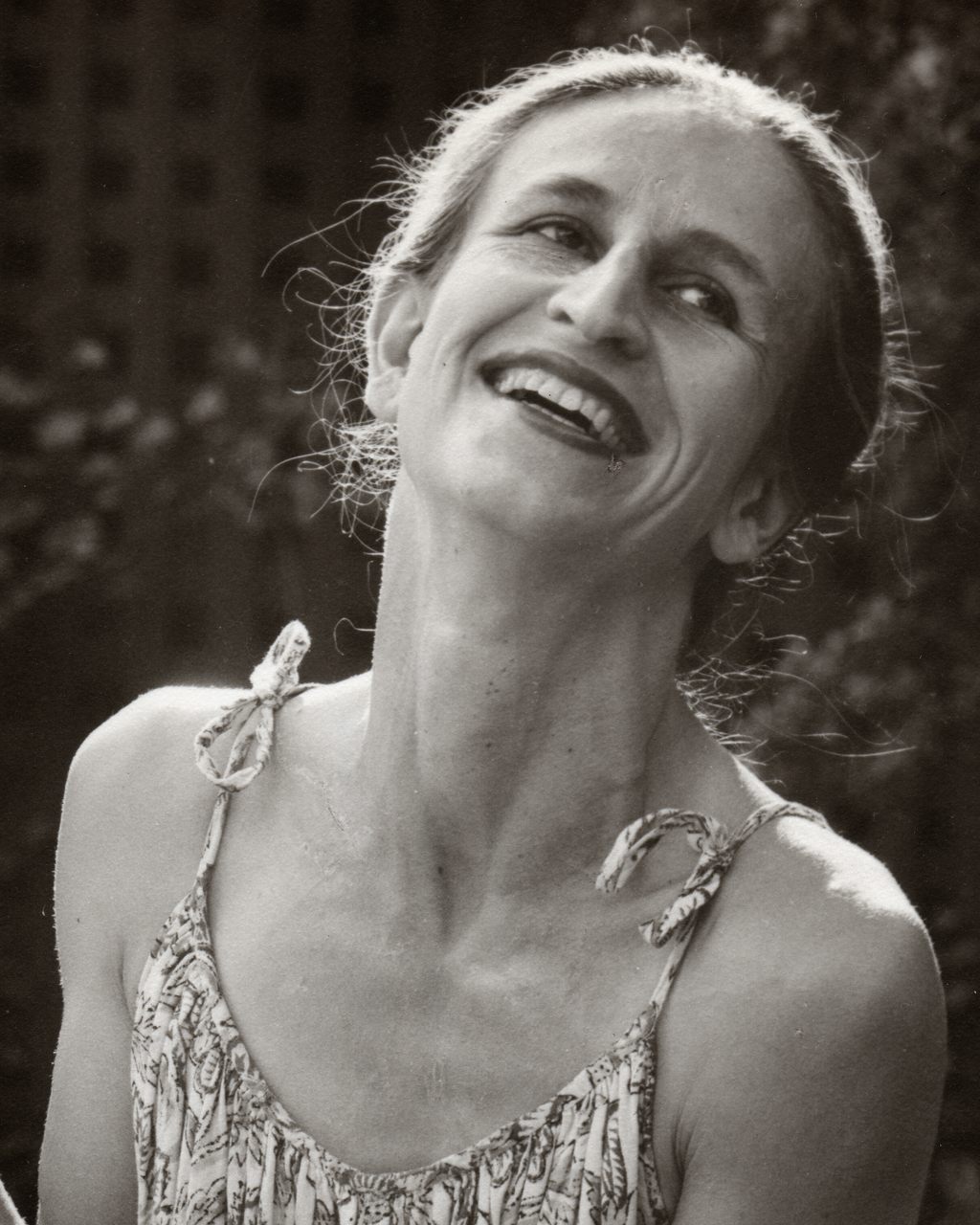
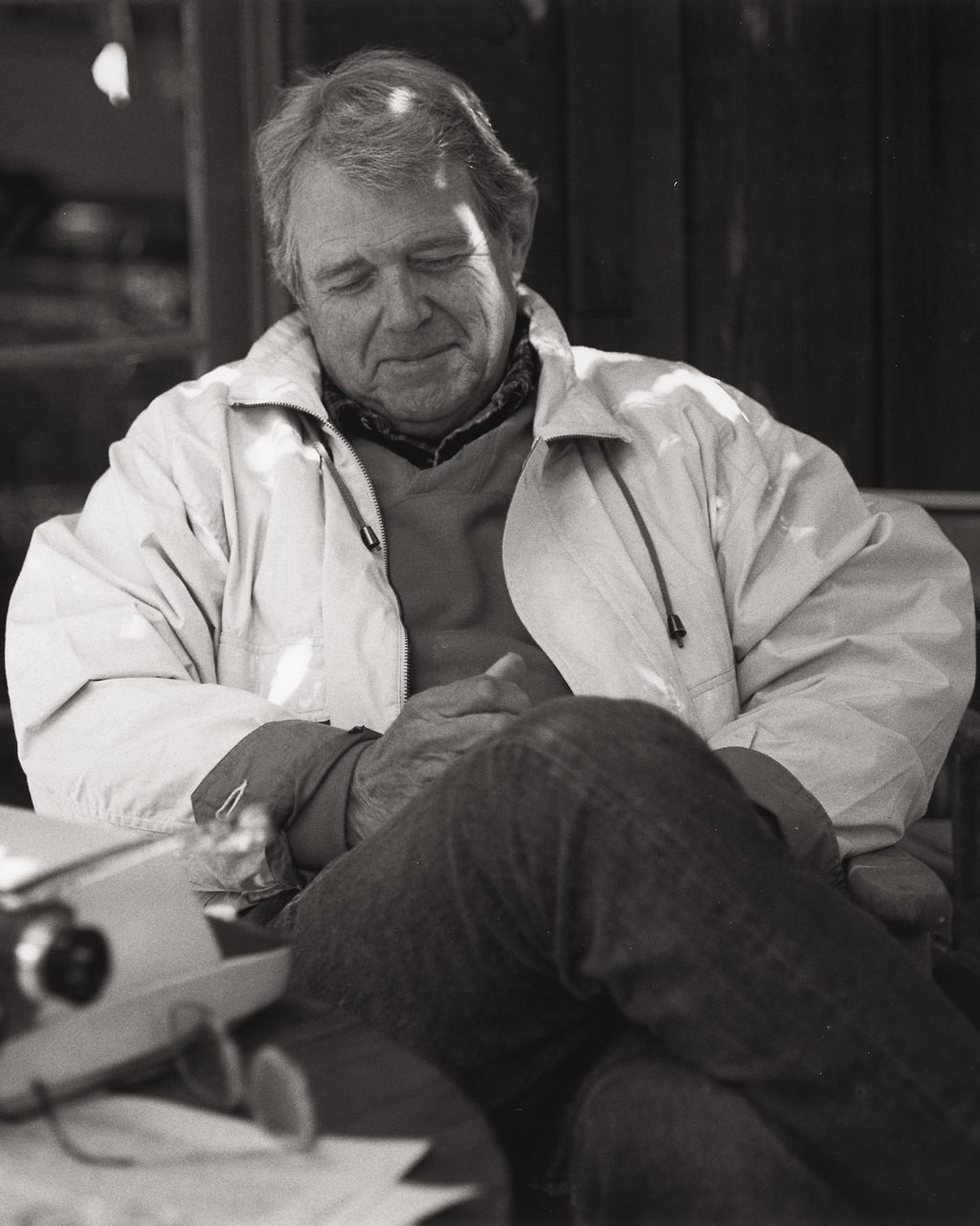
Robert Willis
Artist In Residency
AKA - The Heart Of Dorland
For over thirty years Robert has been an integral part of Dorland. After serving in World War II in the 10th Mountain Infantry Division in Italy, for which he received a Bronze Star Medal for “Meritorious Service in Combat,” Robert and his wife raised a family of six children. During this time he authored a series of juvenile books for which he received a Follett Award for “Worthy Contributions to Children’s Literature,” all the while working as a graphic designer. With his children grown he dropped out of the commercial world and went to live on an estate in the south of France. For many years there, while working on a novel, he did odd jobs and helped in the vineyards in exchange for a modest lodging. Returning to the U.S. in 1992 he came to Dorland as caretaker and artist-in-residence, painting in watercolor and mentoring others. For twelve tranquil and contented years before the fire, he kept the old cottages in repair, the ponds clear, the trails open, and the kerosene lamps glowing. He carries on in the “new” Dorland as artist-in-residence. Some regard him as the heart of Dorland.
Timeline
The Beginning
In the 1930s, Ellen and Robert Dorland homesteaded 300 acres of pristine foothill chaparral near Temecula, CA. The Dorlands chose to leave nearly all of "Rancho Ticañu" in its natural state while adding a uniquely designed cluster of detached living spaces: rustic buildings with elegant furnishings within, from their lengthy stays in Europe. "The Adobe," fashioned out of the adobe clay bricks excavated from its own basement, served as a living room, library, and office, refreshingly cool in summer. The "Kitchen House," a cozy dining and guest space built around an existing miner's shack. Ellen's Studio, containing her bedroom, study, music library, and grand piano, opening to a veranda framed with variegated ivy. The Orchard House, containing Robert's living space. All embraced and canopied by the oak grove oasis which the Dorlands expanded and nurtured, fed by the natural springs on site, and crowned by a lily/cattail pond, "Lake Ticañu" – the landscape's inherent beauty enhanced by the Dorlands' light touch.
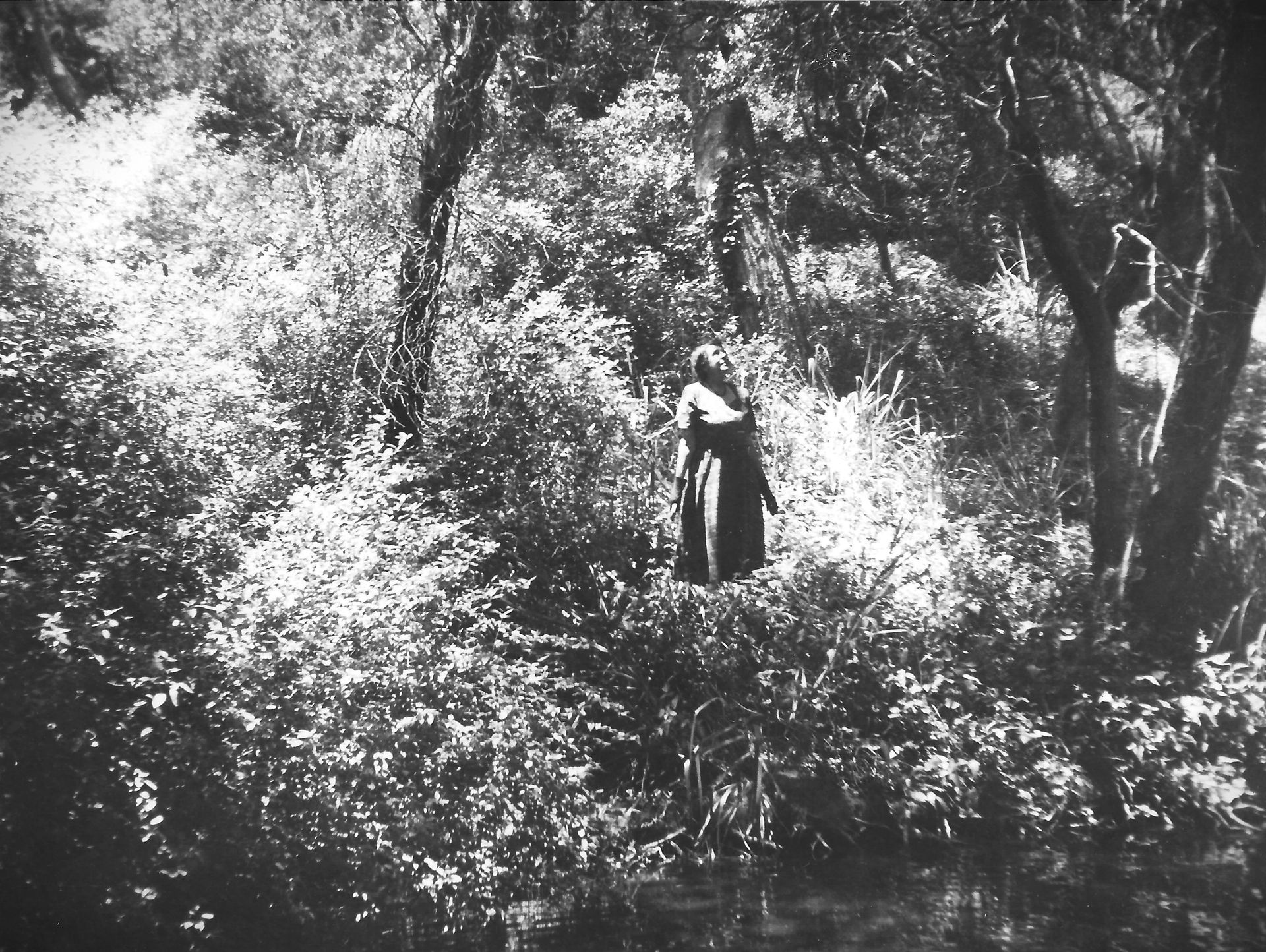
The Vision
The Dorlands shared their hidden paradise with a distinguished circle of friends in the arts, including those gained from Ellen Babcock Dorland’s renowned career as a concert pianist, scholar and teacher. Among the friends, composers Amy Beach and Sergei Rachmaninoff, contralto Ernestine Schumann-Heink (whose broken chair forever afterwards had a place of honor in the corner), concert pianist/Mills College professor E. Robert Schmitz, and composer/conductor Nino Marcelli. A later friend was Barbara Curtis Horton (whose daughter studied with Ellen), a dedicated environmentalist and regional leader of The Nature Conservancy. Initially, Barbara worked with the Dorlands to permanently protect their land, raising funds to add it to the Conservancy’s network of nature preserves. However, Ellen had always dreamed that her legacy could be continued by dedicating the developed area of Rancho Ticañu to use as an artist colony. Barbara came to share that dream, and pulled together the resources (including enlisting her family and friends) to make Dorland Mountain Arts a reality, while continuing its status as a nature preserve.
Dorland Mountain Arts
Dorland Mountain Arts opened its doors formally in 1979, welcoming May Swenson (Chancellor of the Academy of American Poets) among its first residents. Until 1983, Ellen Dorland remained living in her studio and delighted in sharing insights with visiting artists from across generations and fields. In collaboration with The Nature Conservancy, Dorland incorporated as a nonprofit organization and began
serving the local, national and international arts community, providing cultural recognition for the then-small town of Temecula. What began as a private retreat for friends evolved into Southern California’s only year-round residential artists’ retreat and an internationally recognized haven for visual artists,writers, composers and performing artists.
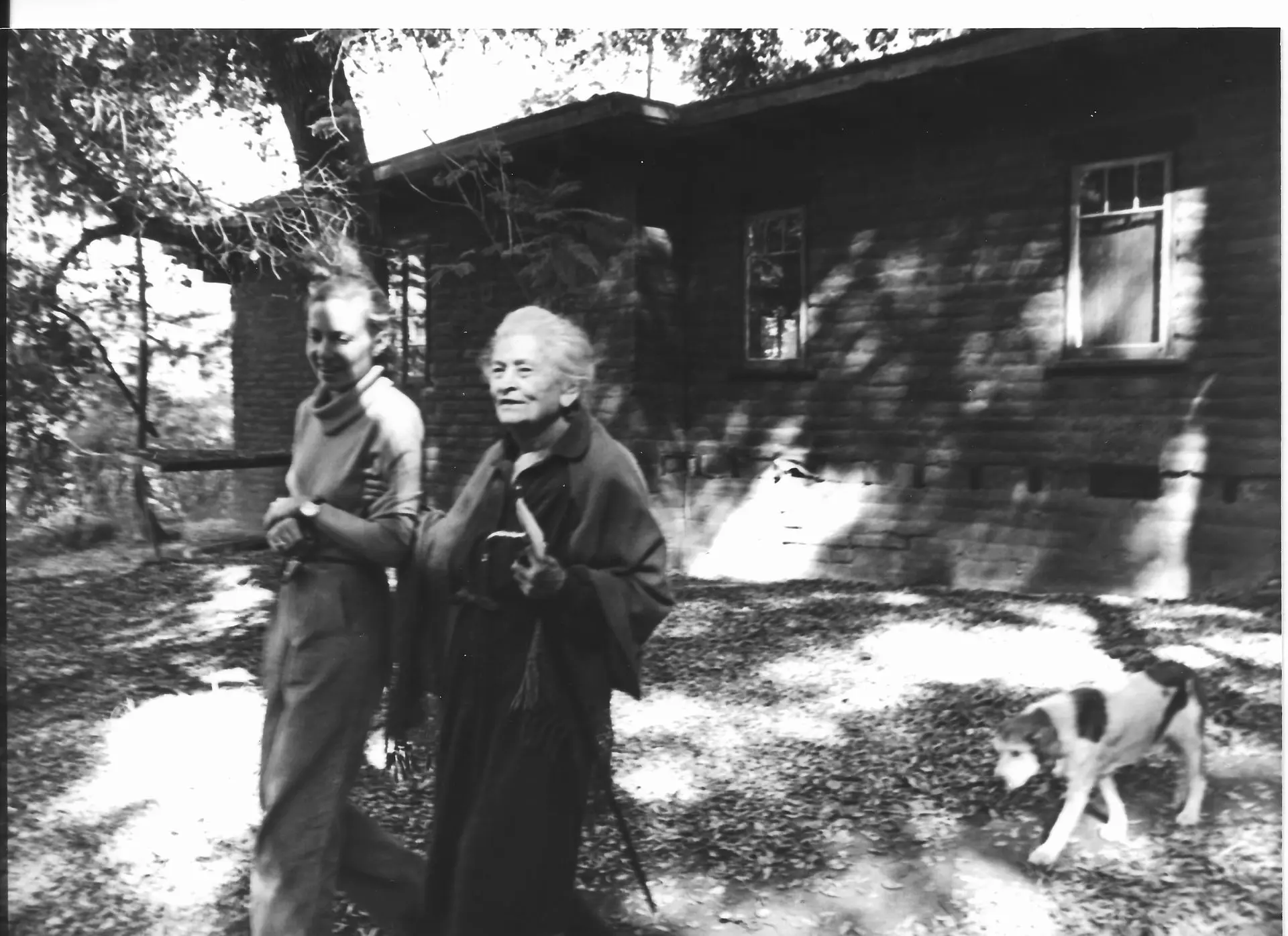
Ellen striding through the grounds with Dorland’s elegant first executive director, Elisabeth DesMarais. Ellen would have been around 93 at the time.
Rustic Life
With the additional cottages built by volunteers, Dorland evolved to serve up to six resident artists at a time, each living independently but also with the opportunity for social gatherings in communal spaces such as the Kitchen House. There were other facilities, including two large studio spaces for visual artists.
Dorland's founders staunchly advanced the value of a simple, minimally technological working environment. During their time, the Dorlands limited their use of electricity (by generator, usually once a week for the vacuum cleaner), used one phone that required a trek and an amplified ring, and depended on propane appliances, kerosene lamps, and wood stoves. The Aladdin mantle lamp over the dining room table cast a magical golden glow and shadow play into the oak grove at night. As an artists' retreat, the tradition continued, requiring residents to adjust closer to 19th century rhythms and the natural cycle of light and dark. This had a profoundly positive impact on residents' perceptions of nature and their own work. Slowing down, unplugging from devices (even then), free from distractions, they found that thorny problems and frustrating mental blocks were swept away and the path forward became clear.
In the early 1990s, longtime resident executive director Karen Connors Cahill joined caretaker/artist-in-residence Robert Willis on staff, making a beloved team guiding residents toward making the most out of their Dorland experience, while leading by example.
First Buildings
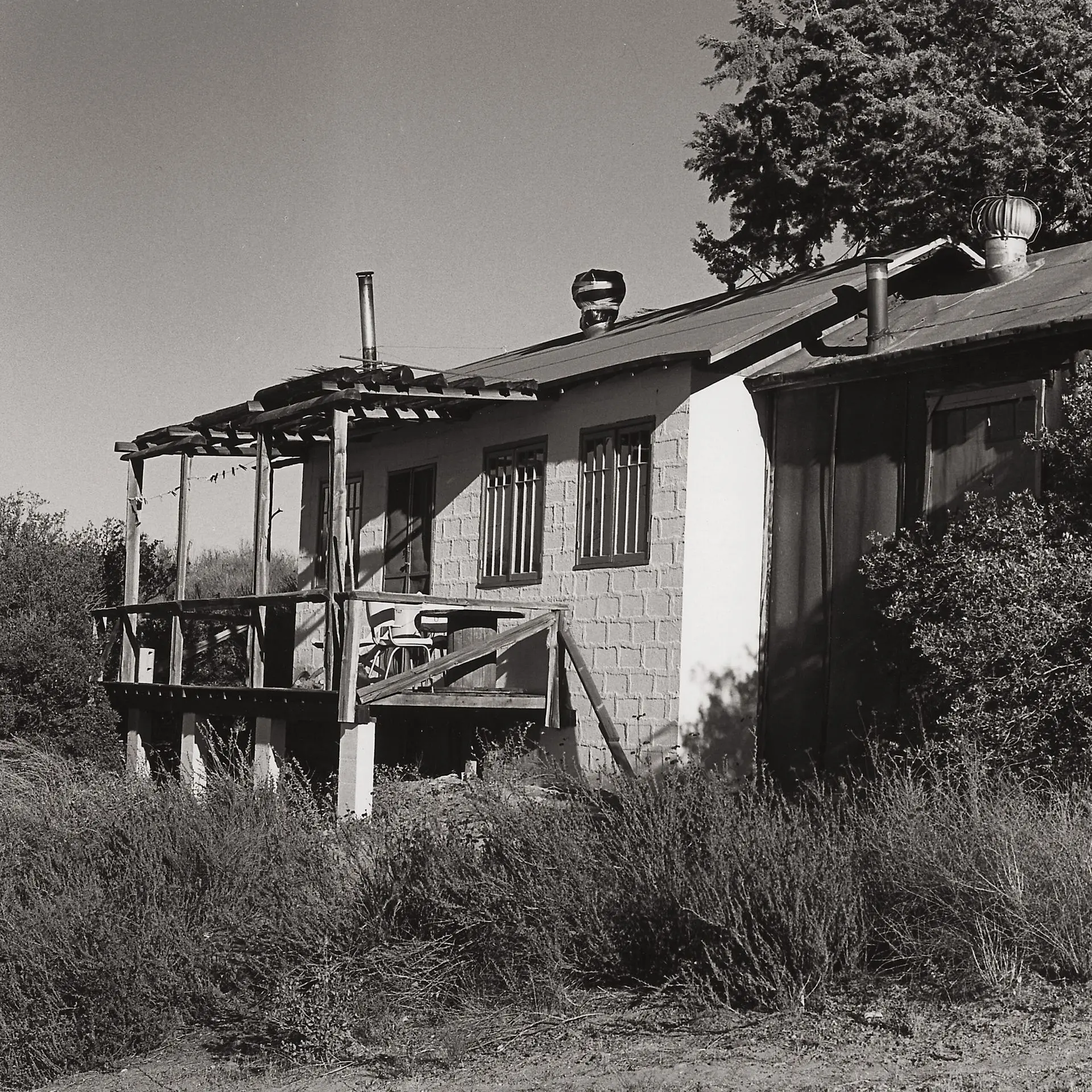
Horton Cottage
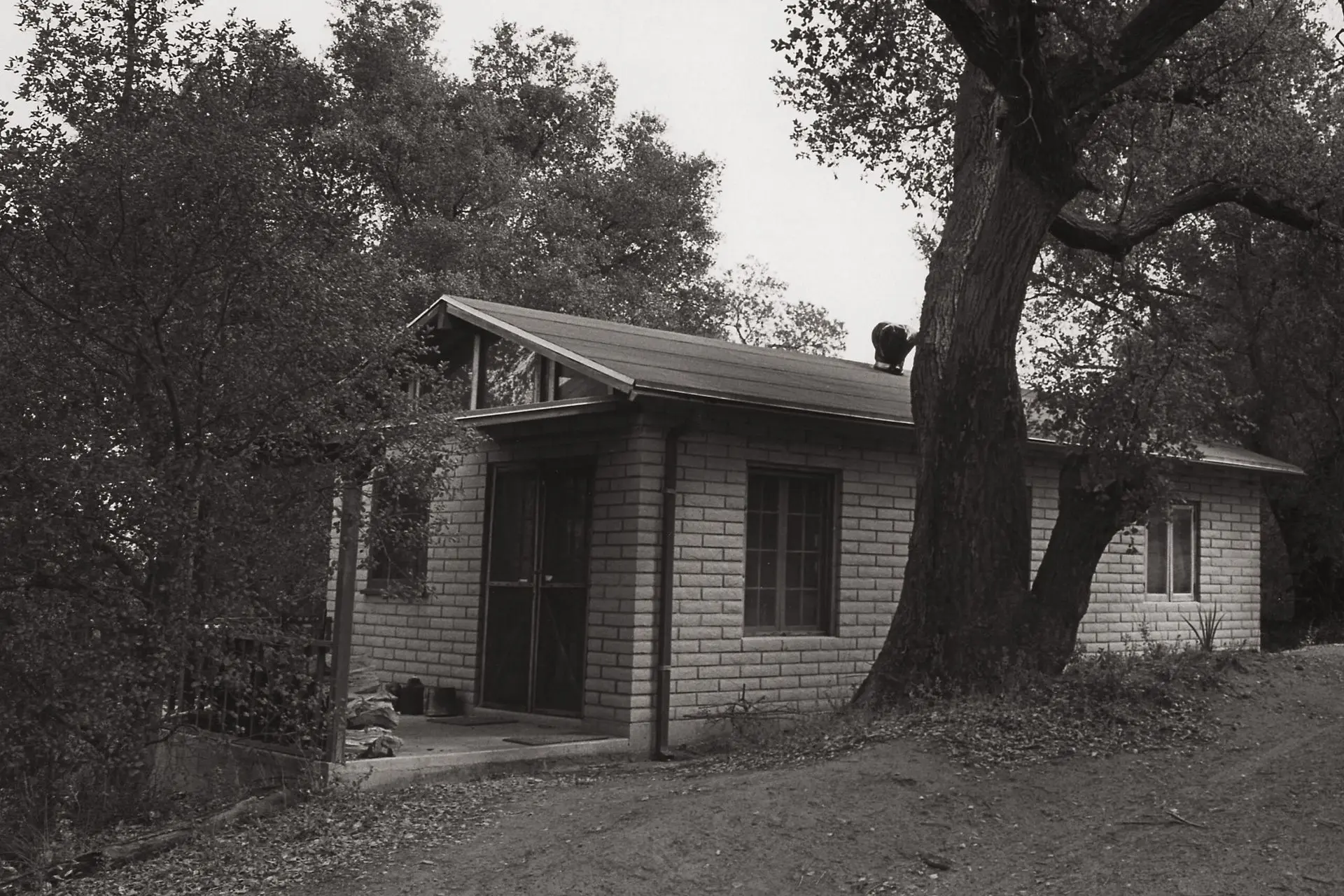
Lake Cottage
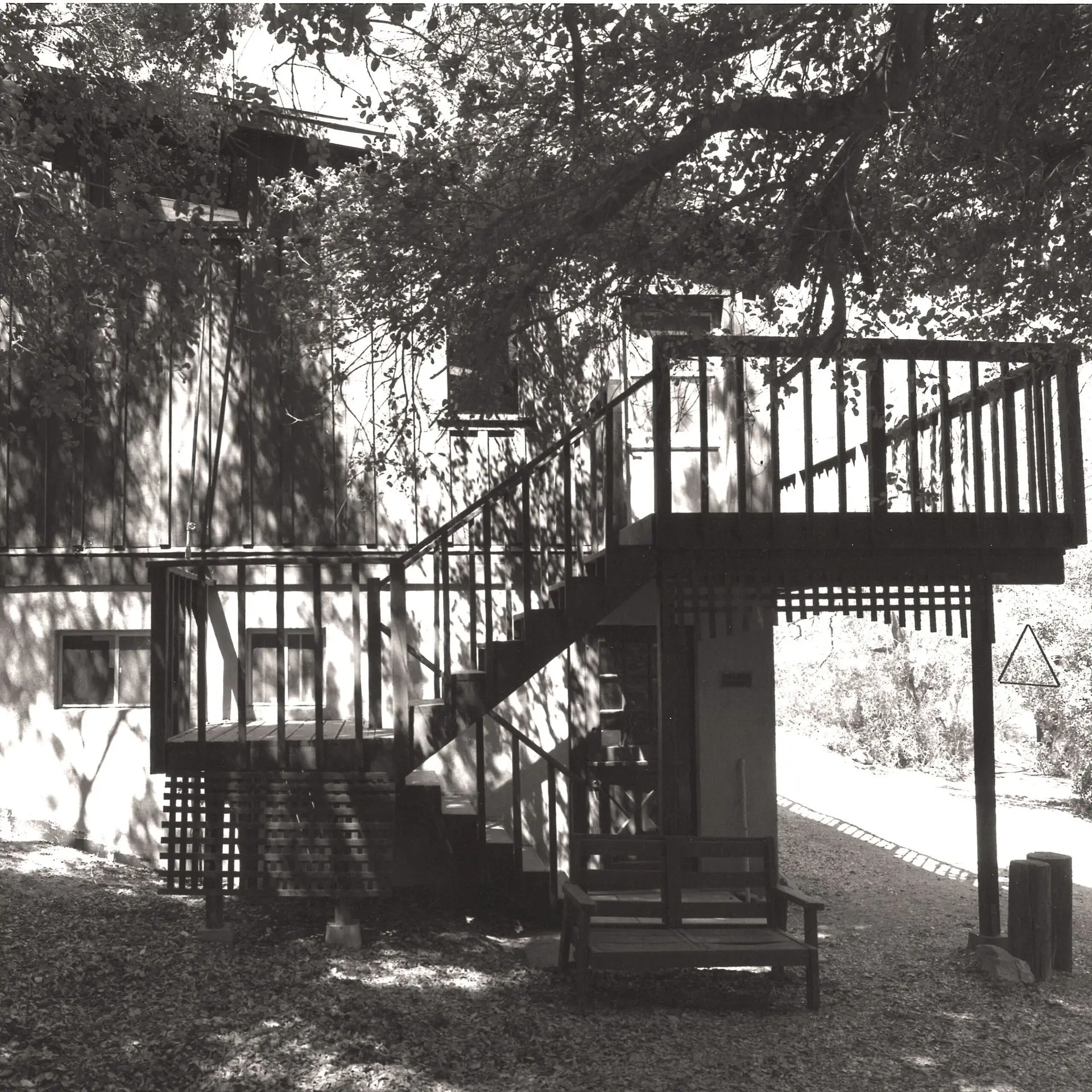
Thompson Studio
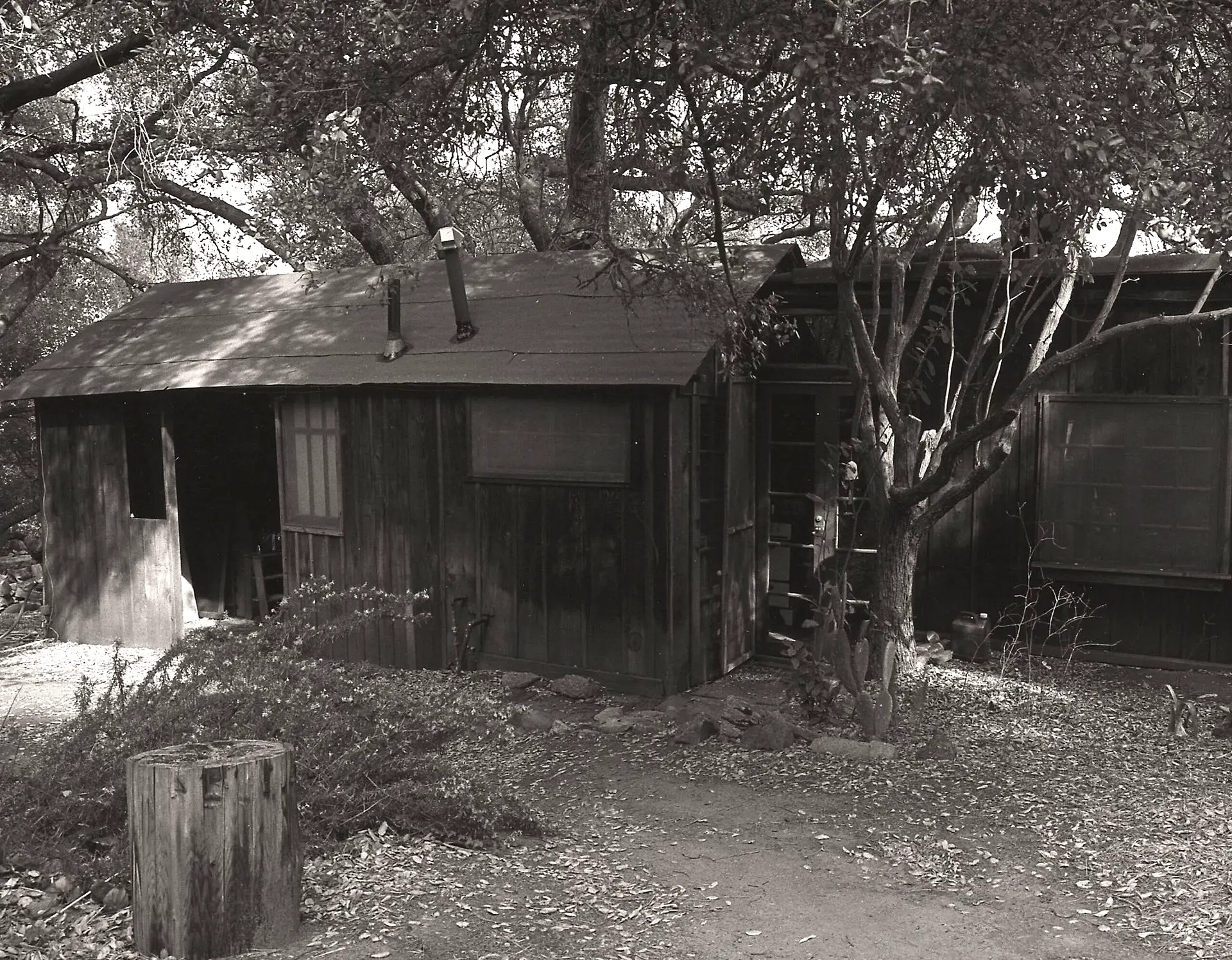
Orchard House
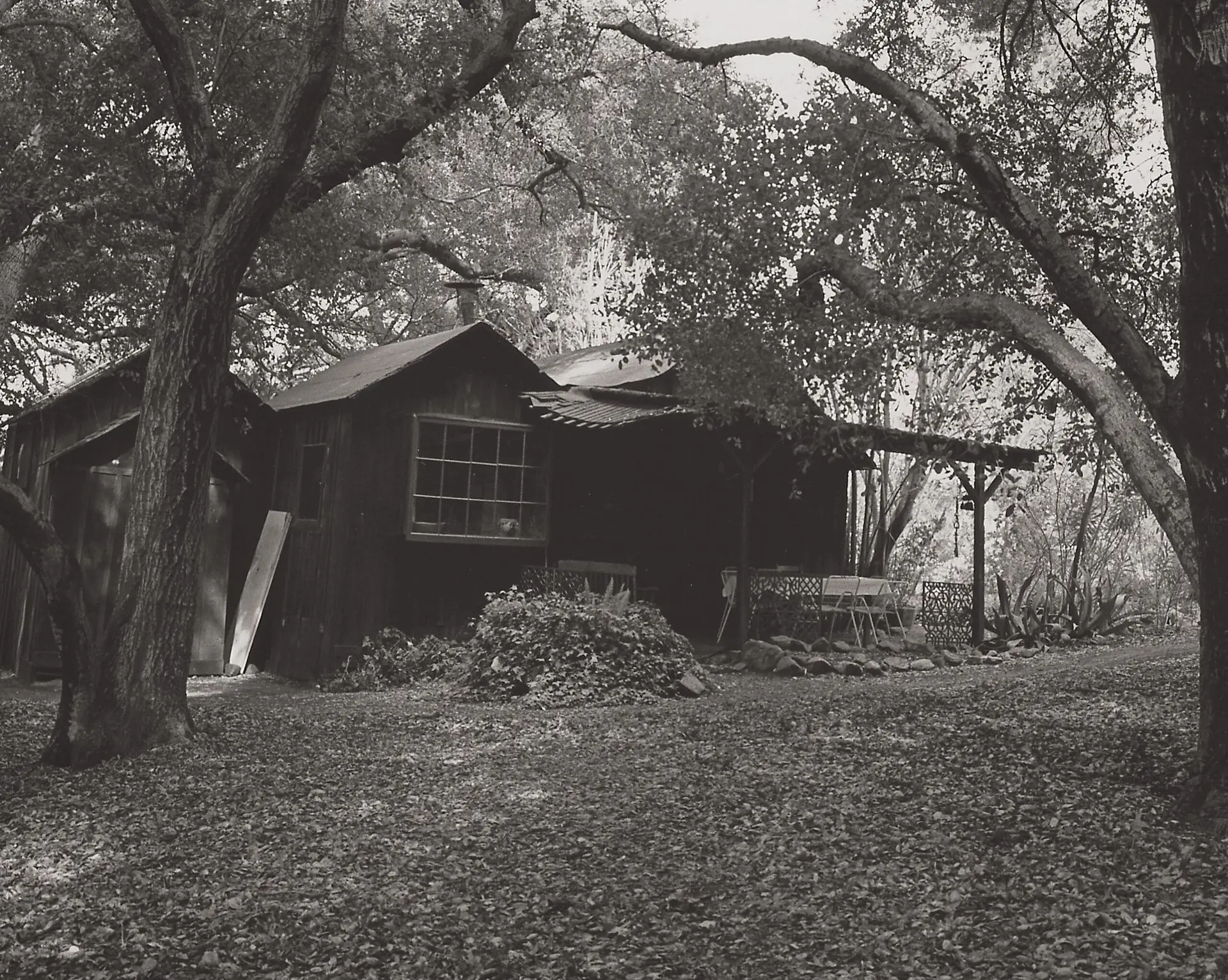
Kitchen House
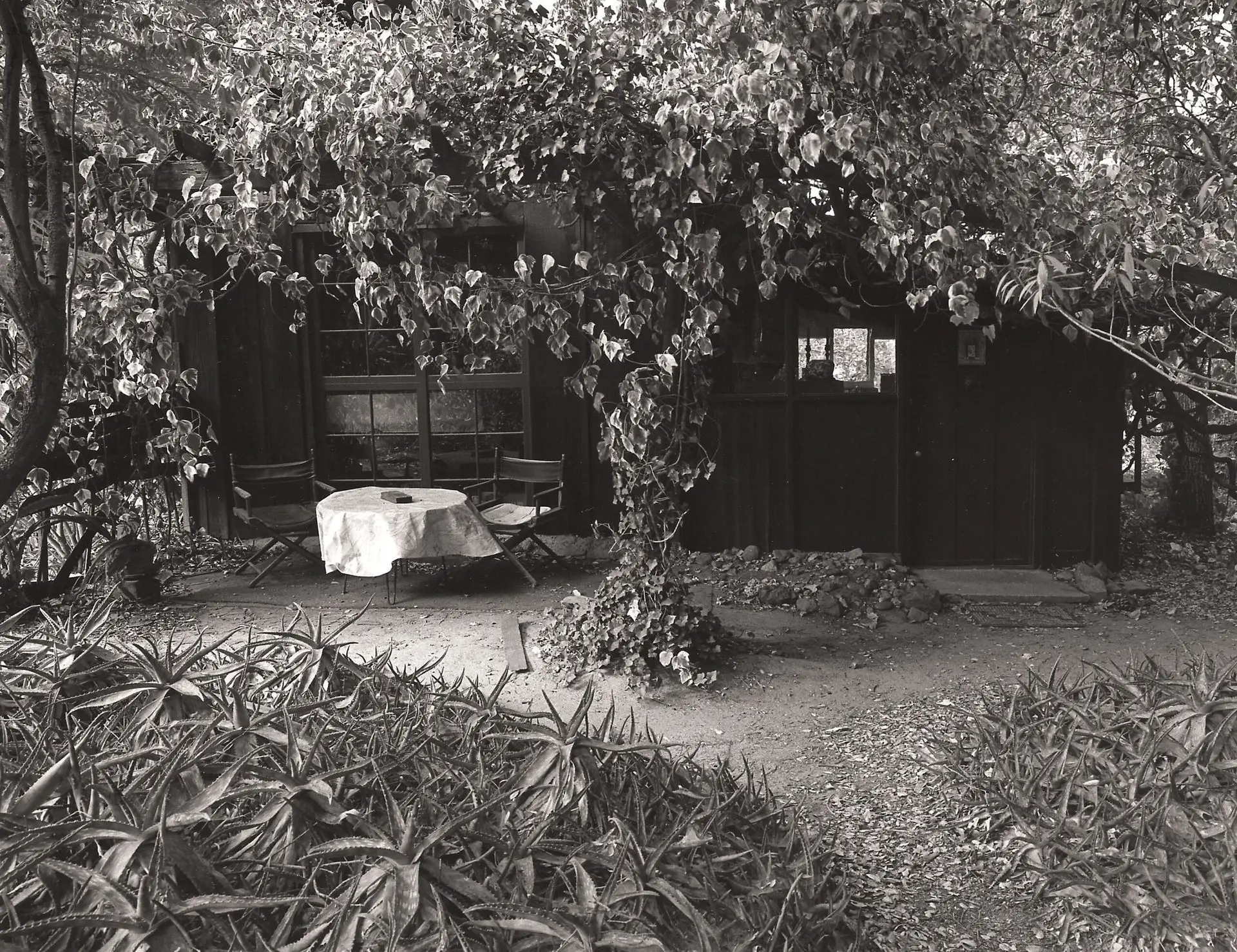
Ellen's Cottage
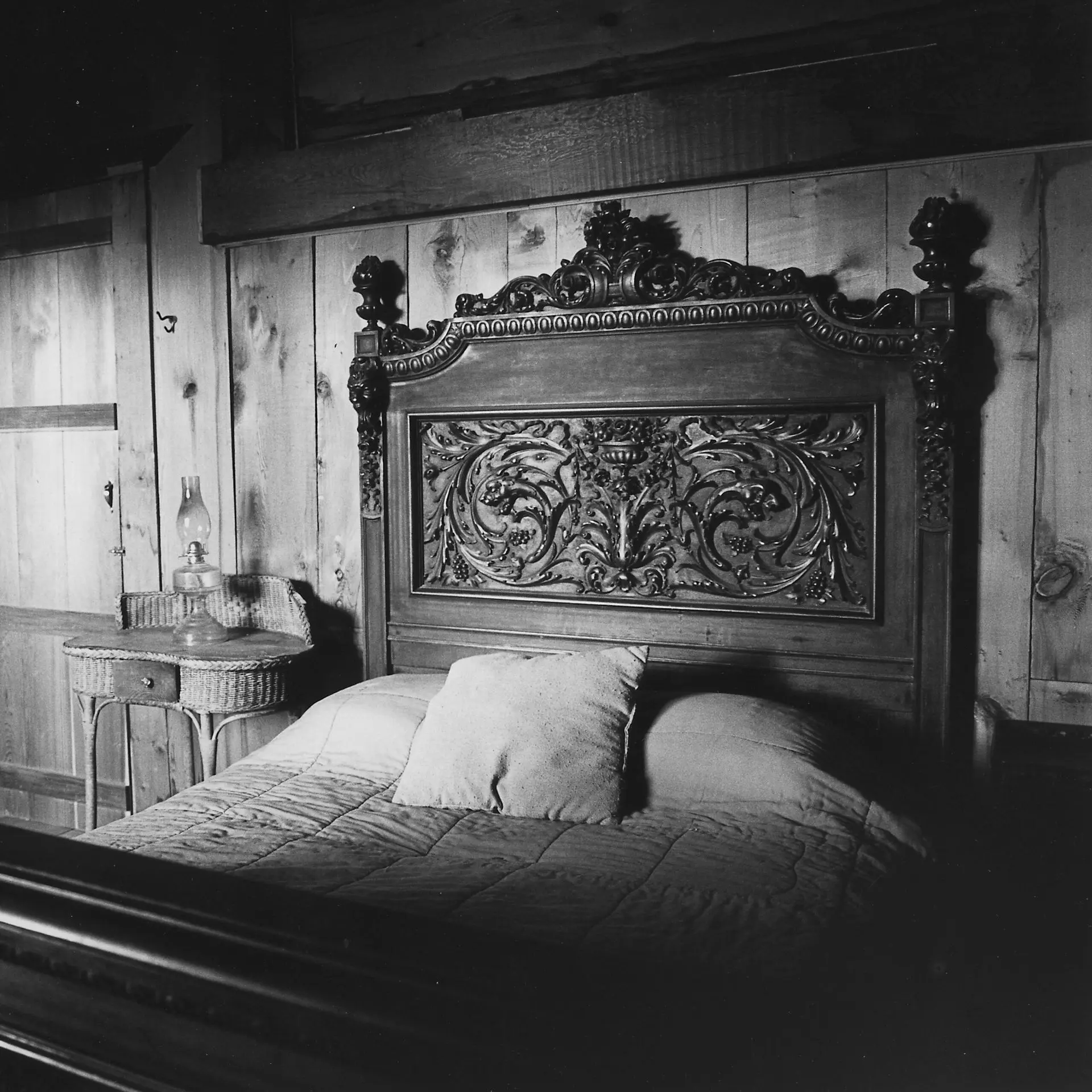
Orchard House Bed
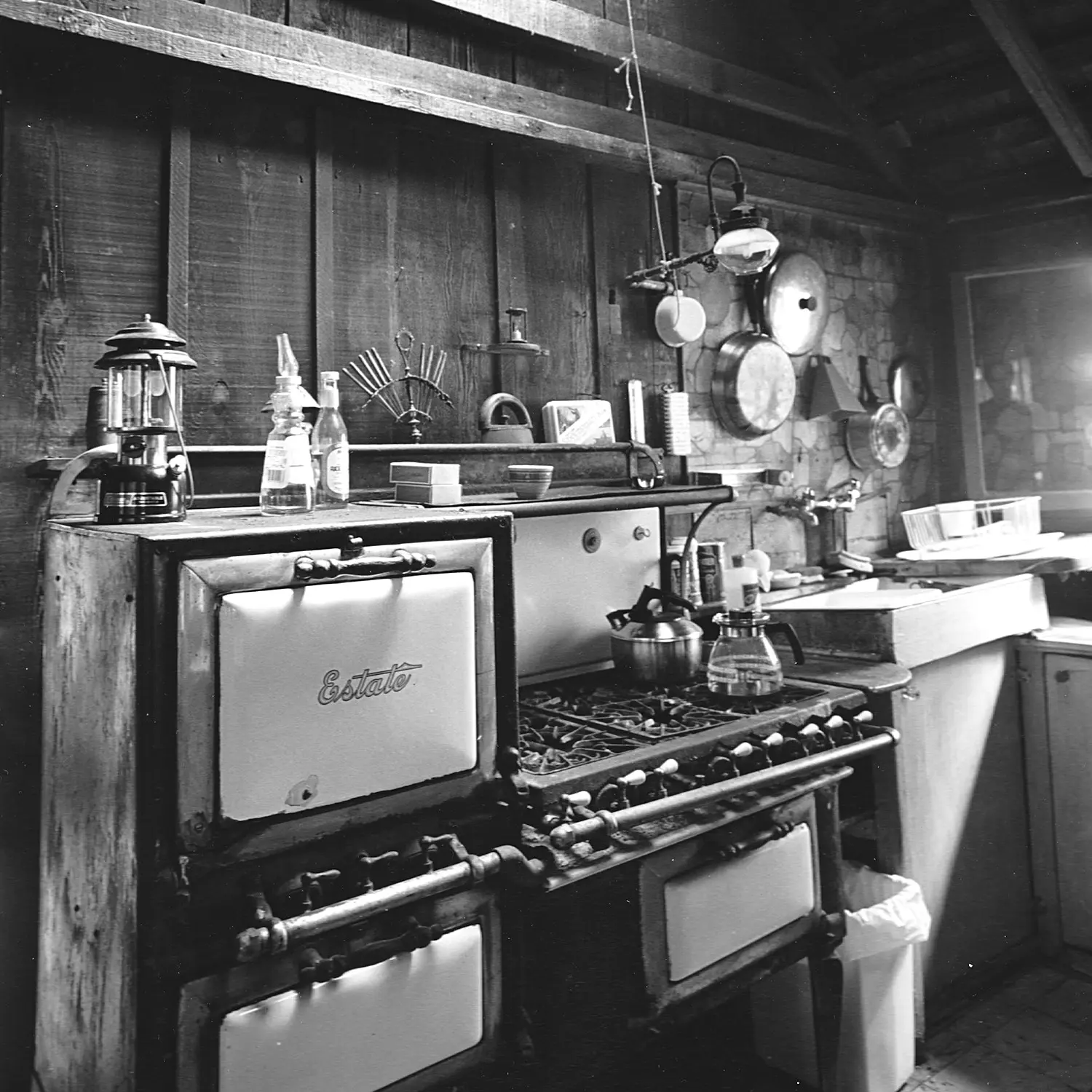
Kitchen House Interior
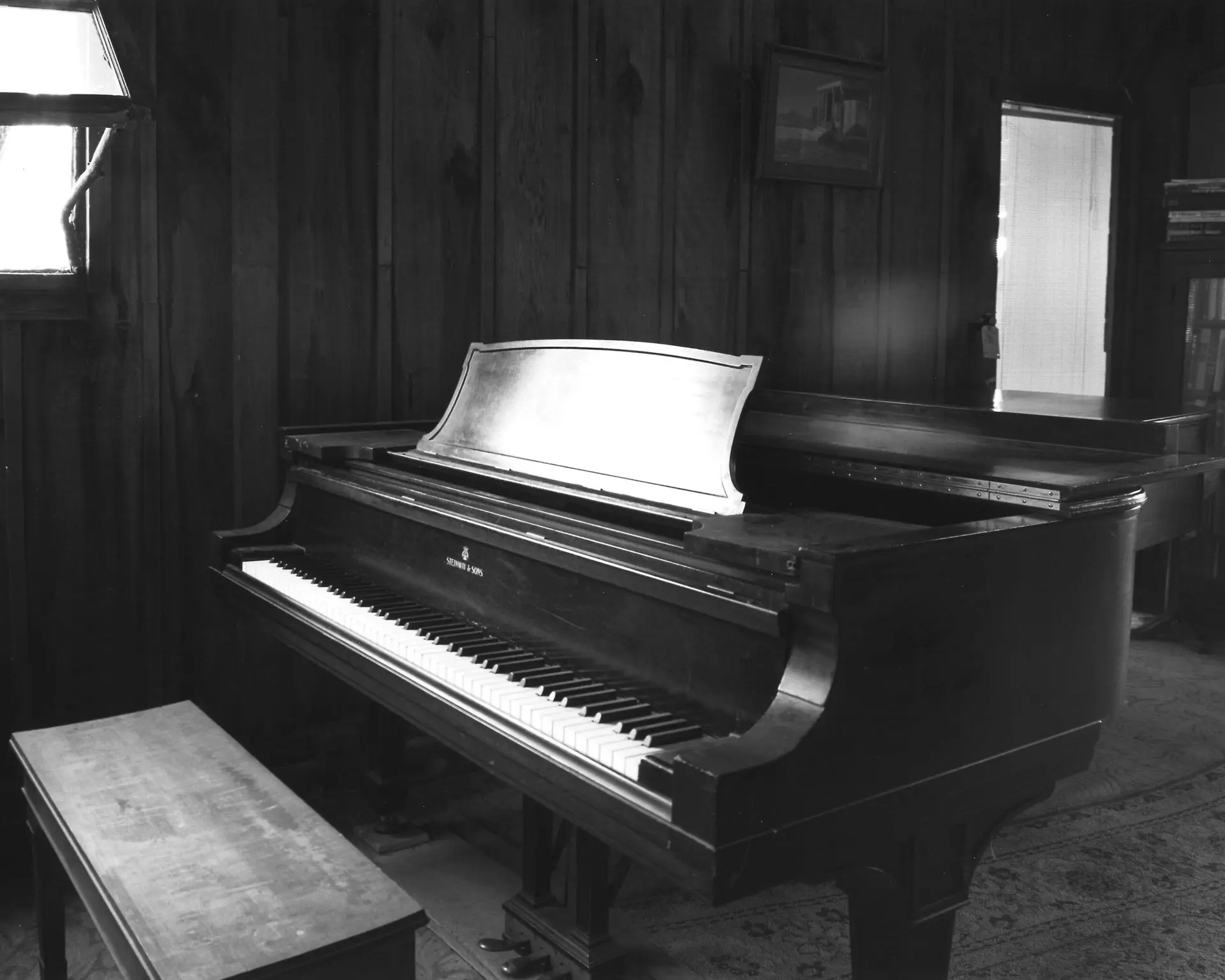
Ellen's Piano
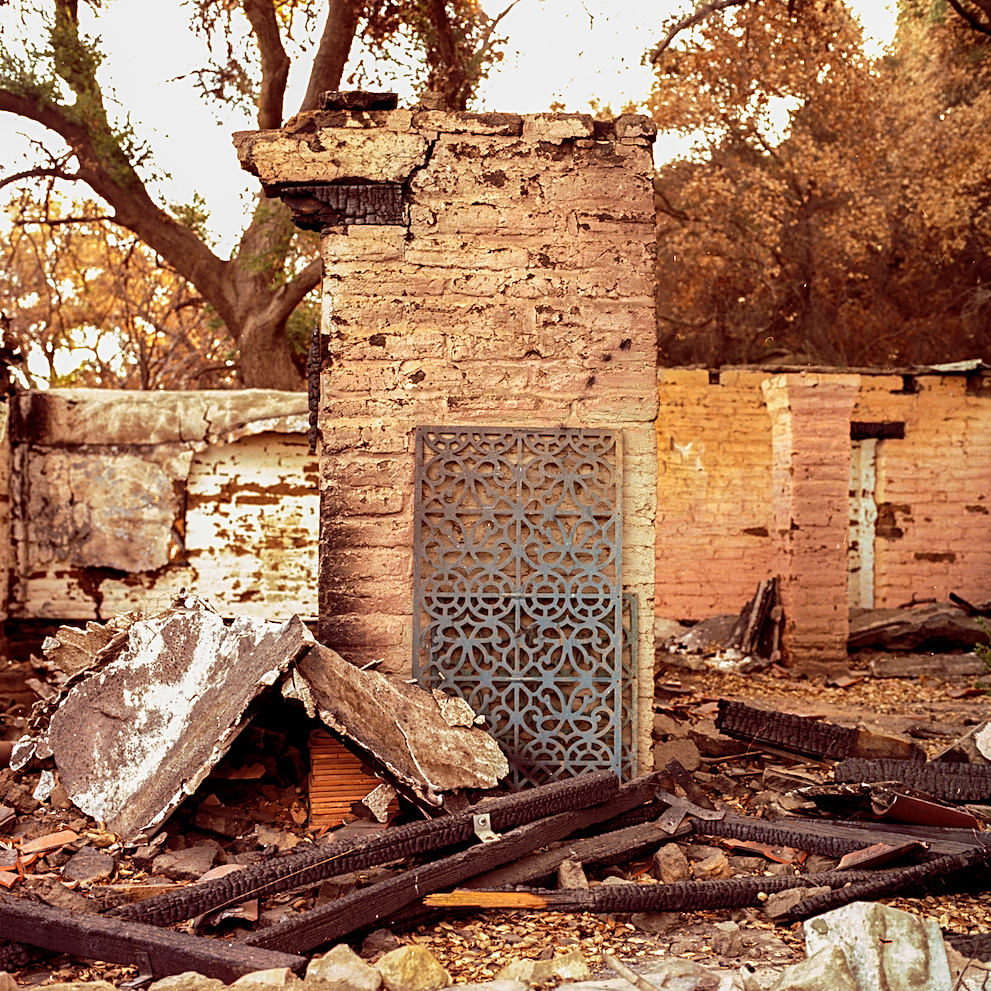
Adobe House
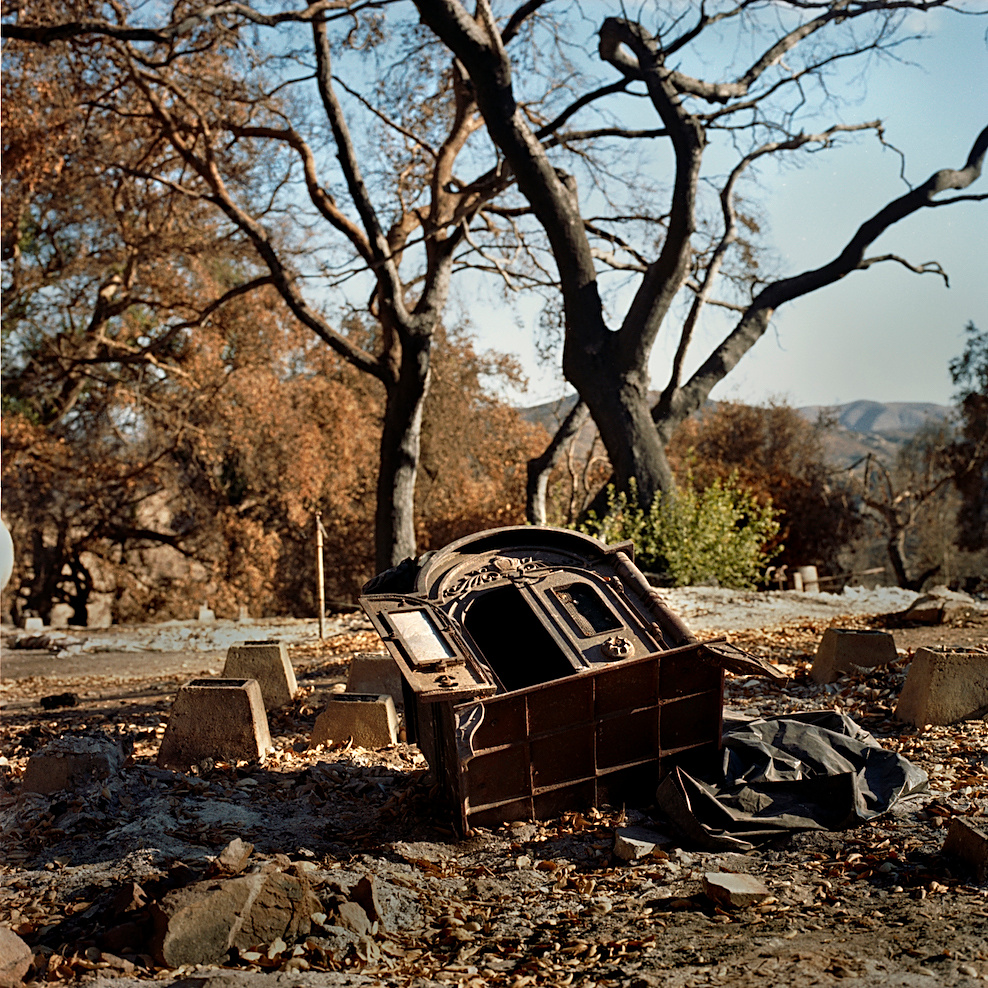
Kitchen House
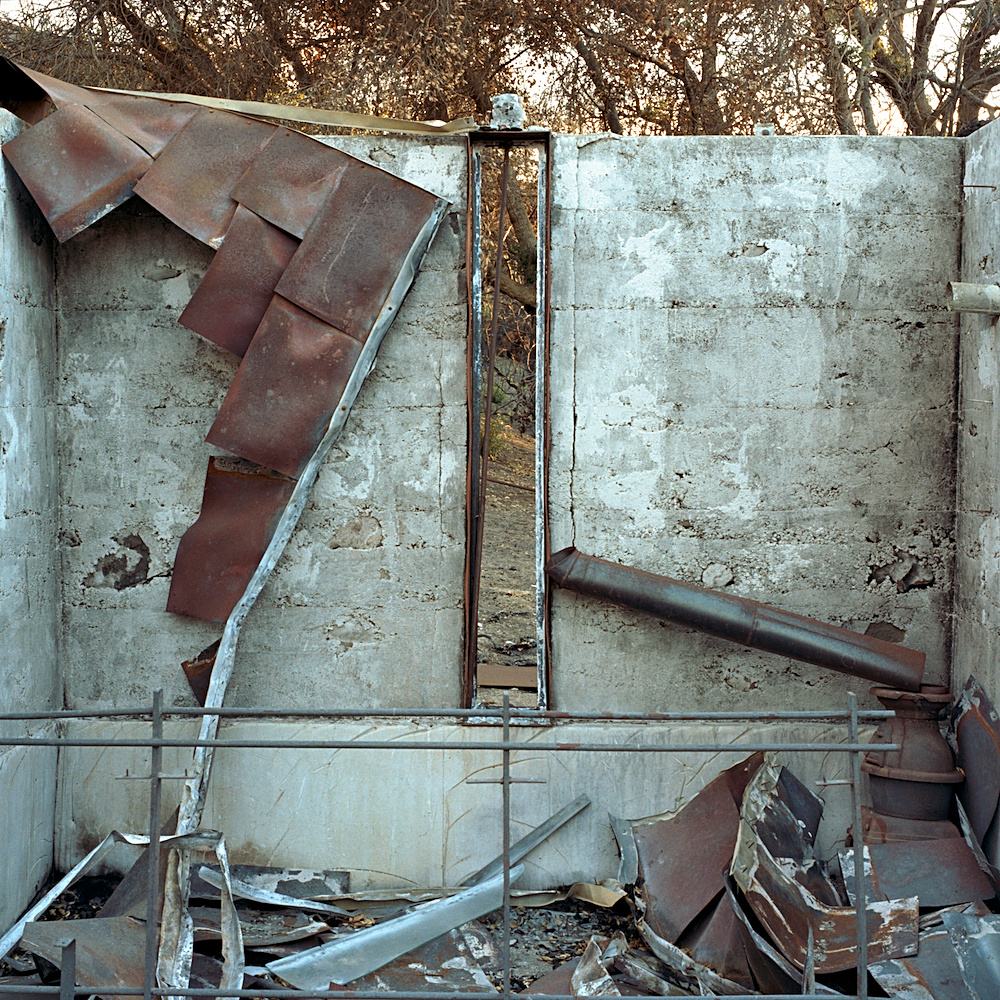
Lake House
The Rebuilding
In February, 2006, Dorland's Board of Directors, appointed one of its own, Martha Minkler, to direct the first phase of the rebuilding effort. With her prior experience managing large projects, and Executive Director Karen Connors Parrott's boots on the ground approach, they jump-started the process. With an all-hands-on-deck mentality among the wider Dorland community of former resident artists, board members, staff, the local Temecula community, and the County of Riverside, providing generous support to rebuild the retreat and increase its accessibility to the local community. A licensed arborist was hired to clear out fire-damaged trees while preserving the remaining indigenous oaks and surrounding native plants.
While the historic character of Dorland could not be restored (as a practical and legal matter), many things were gained in its place: durable new cottages which are more comfortable, accessible, and easier to maintain; a larger, more versatile community space which lends itself to events organized by the newly formed local group of Associate Artists of Dorland; plus office and quality living space for staff. The most essential quality of Dorland could never be extinguished: the inspiring landscape and closeness to nature.
The Reopening
In 2008, two cottages were completed and opened for resident artists. Dorland was back!
Rebuilding, Phase Two: Moving Forward
Ably guided by steadfast Executive Director Janice Cipriani-Willis, Dorland continued the process of returning to full capacity. Two more artist residences were installed by 2016. The Community Arts Center, which serves as a community gathering place and contains the Jane Culp Studio for visual artist residents' use, was donated by Friends of Dorland, and brought to the property in 2015.
Continued Progress
In Fall 2017, with the assistance of County of Riverside officials, including County Supervisor Chuck Washington, both Zachai Cottage and the Community Arts Center became ADA-accessible after construction of 2 ADA ramps, a deck, and 2 ADA parking spaces.
Three Heartfelt Gifts
In 2019, longtime Dorland benefactor, the Roripaugh Family Foundation, was inspired to make a transformative gift of a new artist residence, bringing the total complement to five. Its inauguration became a celebratory occasion for the extended Roripaugh family, with their deep ties to the region, and an opportunity for Dorland to say "Thank you!" for Roripaugh's dedicated support of the arts and the environment in the region.
The Ryoanji ("peaceful dragon") Cottage was generously gifted to Dorland in 2020 by Dr. D Gause and friend Dr. Gerrard Errante to be used as the onsite caretakers' home. Dr. D, a professor of music, versatile musician and composer, fell in love with Dorland as a resident artist (as Dorland fell in love with her) and served as a Dorland board member.
Board member Steven Forry, whom we lost suddenly in 2021, brought to bear his infectious enthusiasm for Dorland and deep experience in philanthropy, becoming instrumental in all the progress of recent years. Including the crucial gift from his friends Ed and Daria Reed which made possible a new well and modern water system, without which Dorland could not exist.
Dorland Today
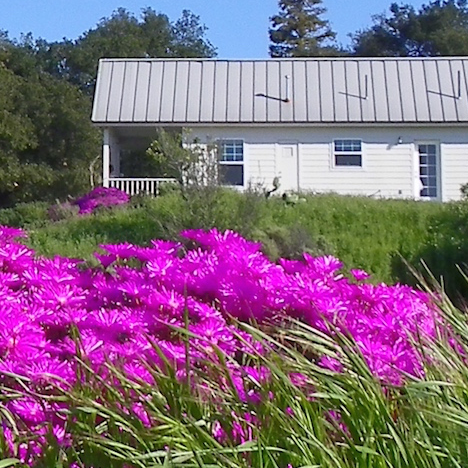
Horton Cottage
Built in 2008
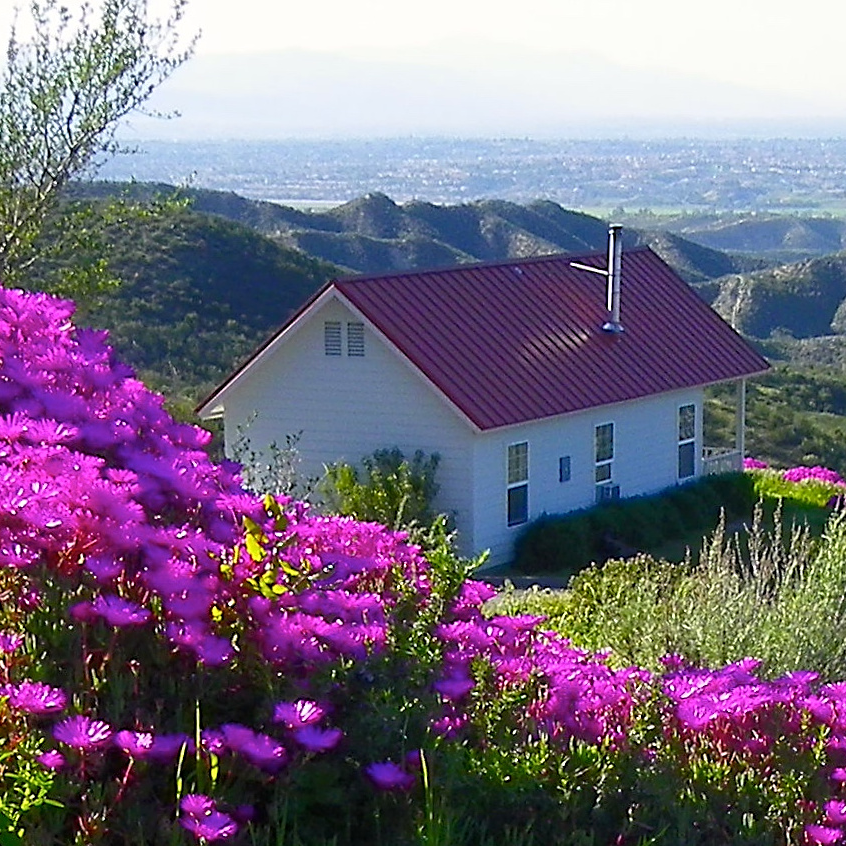
Markham Cottage
Built in 2008
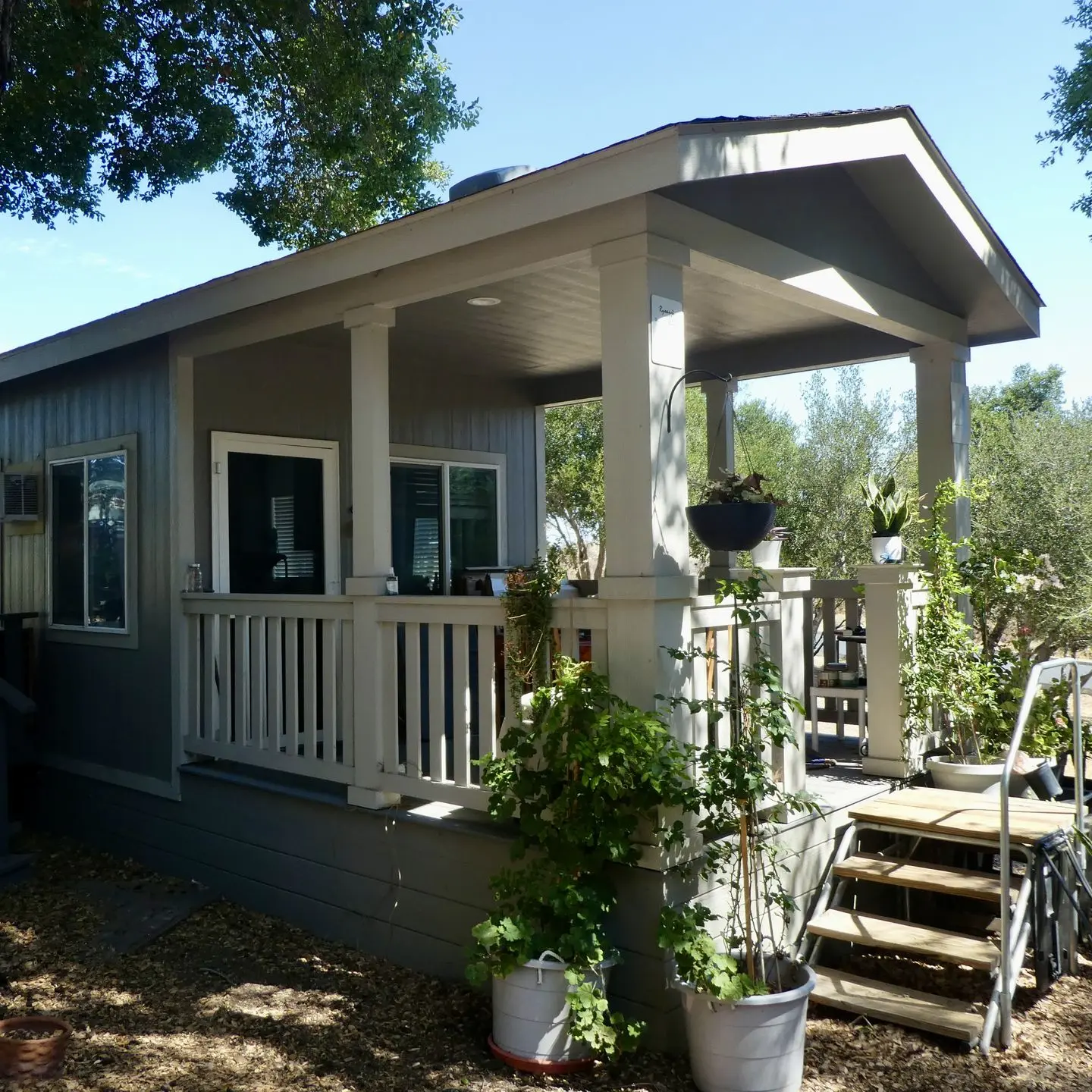
Ryoanji Cottage
Installed in 2020
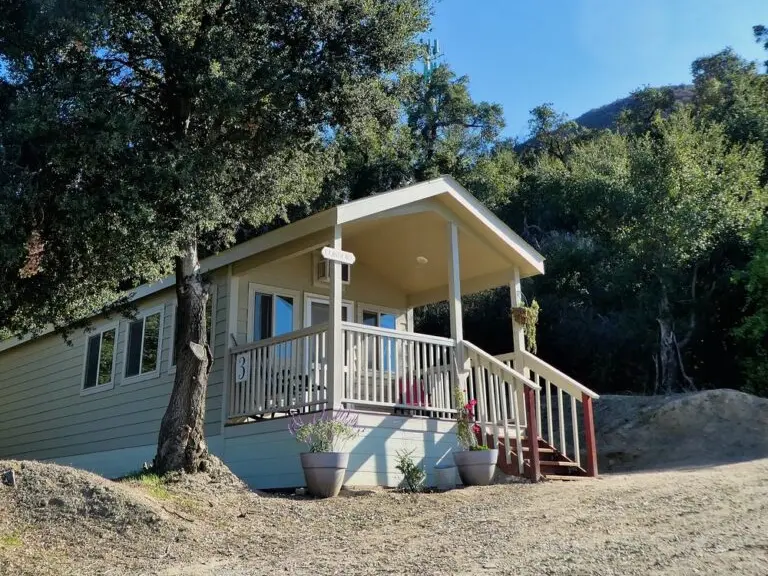
Connors Cottage
Installed in early 2016
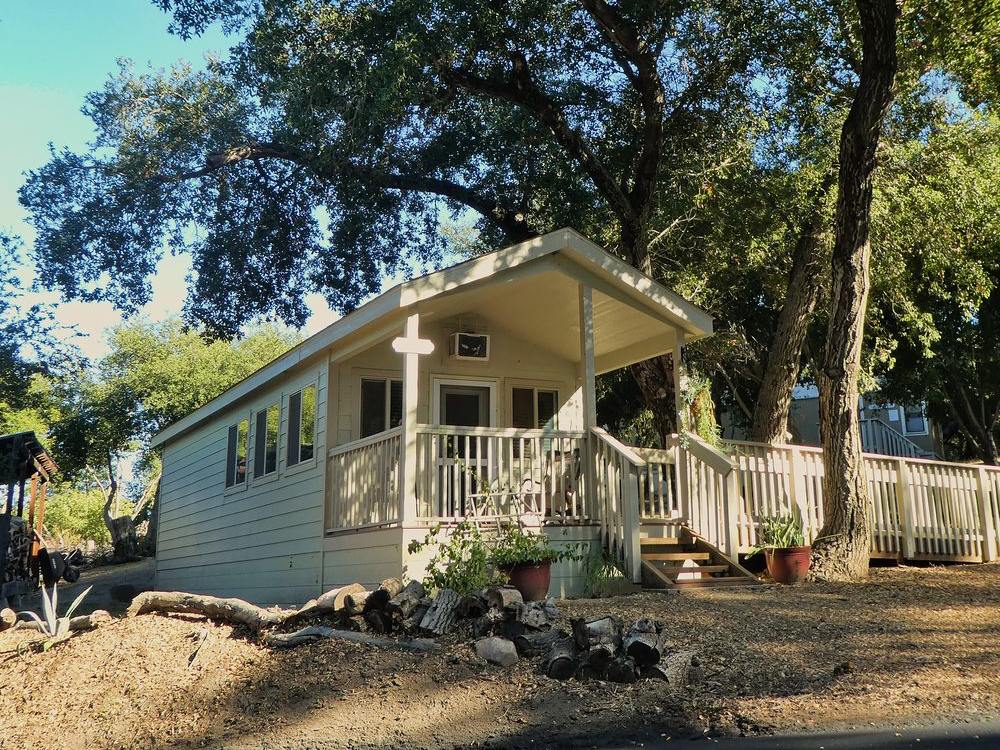
Zachai Cottage
Installed in early 2016
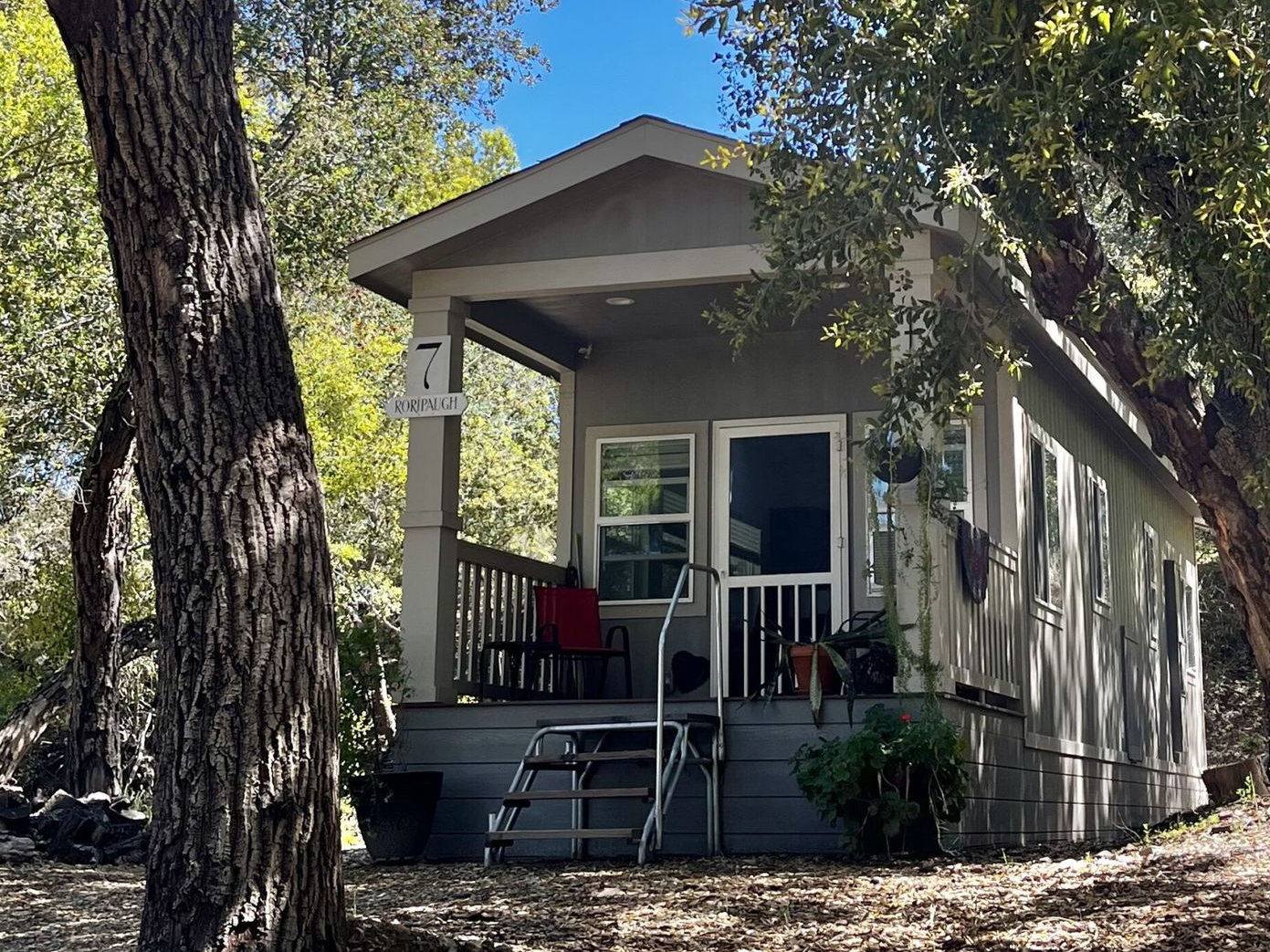
Roripaugh Cottage
Installed on June 25, 2019

